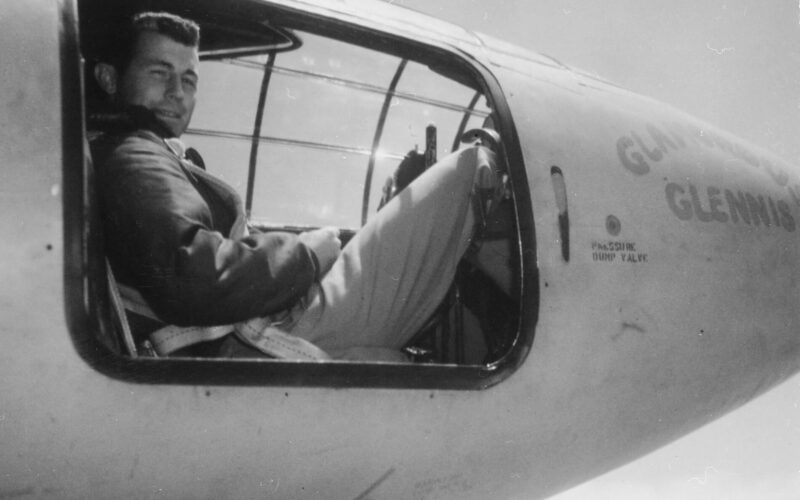The aviation pioneer Charlie “Chuck” Yeager died at the age of 97 on December 7, 2020. Yeager made history as a test pilot when he broke the sound barrier aboard his Bell X-1 on October 14, 1947.
World War II flying ace
Charles Elwood Yeager, known as “Chuck” Yeager, is one of the world’s most prestigious and well-known test pilots. Born February 13, 1923, in a small town of West Virginia, Yeager grew up with his mechanic father who taught him the trade. He graduated from higher education in 1941 and enlisted in the US Army Air Corps.
Initially working as a plane mechanic, Yeager eventually learned how to fly. He was deployed in Europe within the 357th Fighter Group of the 8th Air Force where he flew his P-51 Mustang “Glamourous Glennis”, named after his then-girlfriend and future wife. In March 1944, Chuck was shot down behind enemy lines, but hidden by the French Resistance, he managed to rejoin his unit in England.
Throughout the war, he was credited with twelve-and-a-half victories, most of them over Messerschmitt Bf 109 fighters. His most memorable victory was probably over a Messerschmitt Me 262, the world’s first jet fighter, in 1944. “First time I saw a jet, I shot it down.”
Entering History at supersonic speed
After the war, Yeager became a test pilot at Wright Field, Dayton, Ohio. In 1947, he volunteered for the Supersonic Airplane Project at Rogers Dry Lake, California, which would later become one of the Space Shuttle runways.
On October 14, 1947, he sat in the cockpit of the experimental rocket-powered Bell XS1 (still named “Glamourous Glennis”), attached under a specially modified Boeing B-29 Superfortress heavy bomber. Two days before the flight, Chuck had broken two ribs in a horseriding accident in the desert. Rather than to forfeit this test flight, he kept his accident secret. Because of the pain, Yeager had to use a broomstick to close the X-1’s cockpit before takeoff.
After reaching an altitude of 45,000 feet (13 kilometers), XS1 was released by the bomber. A few minutes later, a loud bang was heard by witnesses: Chuck Yeager had just crossed the sound barrier. The Bell X-1’s machmeter showed a speed of Mach 1.06 (1,130 kilometers per hour), earning Chuck the name of “fastest man alive”.
In September 1953, Chuck Yeager was one of the first U.S. nationals to fly a Mikoyan-Gourevitch MiG-15 that a North Korean pilot, No Kum-sok, handed over to the U.S. military after defecting. The aircraft flying performances had impressed the United Nations’ forces when it entered the Korean War.
Chuck Yaeger retired in 1975. On the 65th anniversary of his record on October 14, 2012, he broke the sound barrier one last time flying as co-pilot in a McDonnell Douglas F-15 Eagle. He was then aged 89.
On December 7, 2020, Victoria Yeager announced the death of her husband on his Twitter account.
“Chuck’s bravery and accomplishments are a testament to the enduring strength that made him a true American original,” NASA Administrator Jim Bridenstine praised in a statement, adding “NASA’s Aeronautics work owes much to his brilliant contributions to aerospace science.”

